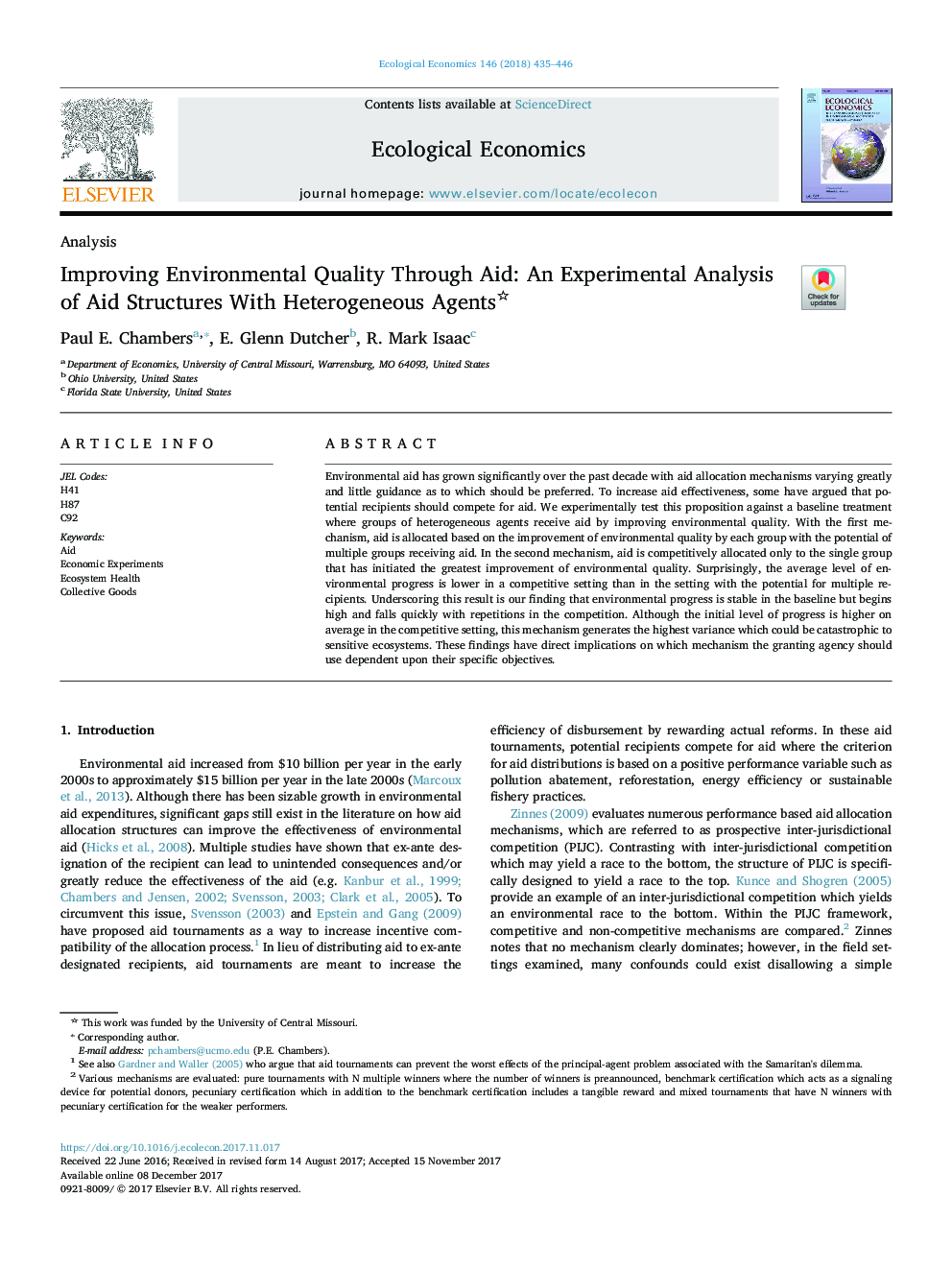| Article ID | Journal | Published Year | Pages | File Type |
|---|---|---|---|---|
| 7344611 | Ecological Economics | 2018 | 12 Pages |
Abstract
Environmental aid has grown significantly over the past decade with aid allocation mechanisms varying greatly and little guidance as to which should be preferred. To increase aid effectiveness, some have argued that potential recipients should compete for aid. We experimentally test this proposition against a baseline treatment where groups of heterogeneous agents receive aid by improving environmental quality. With the first mechanism, aid is allocated based on the improvement of environmental quality by each group with the potential of multiple groups receiving aid. In the second mechanism, aid is competitively allocated only to the single group that has initiated the greatest improvement of environmental quality. Surprisingly, the average level of environmental progress is lower in a competitive setting than in the setting with the potential for multiple recipients. Underscoring this result is our finding that environmental progress is stable in the baseline but begins high and falls quickly with repetitions in the competition. Although the initial level of progress is higher on average in the competitive setting, this mechanism generates the highest variance which could be catastrophic to sensitive ecosystems. These findings have direct implications on which mechanism the granting agency should use dependent upon their specific objectives.
Related Topics
Life Sciences
Agricultural and Biological Sciences
Ecology, Evolution, Behavior and Systematics
Authors
Paul E. Chambers, E. Glenn Dutcher, R. Mark Isaac,
